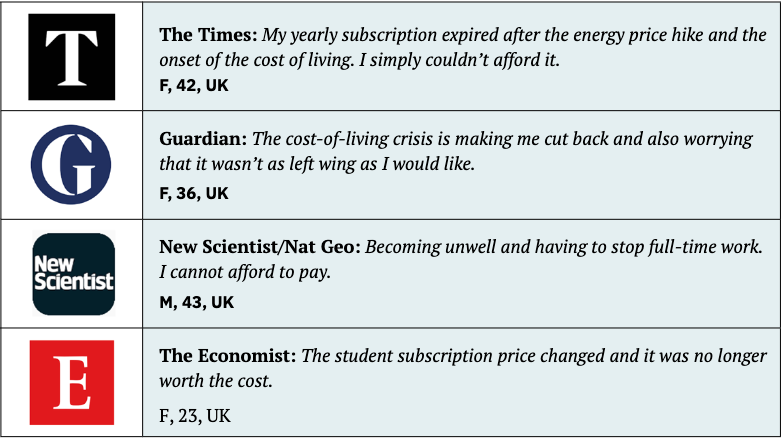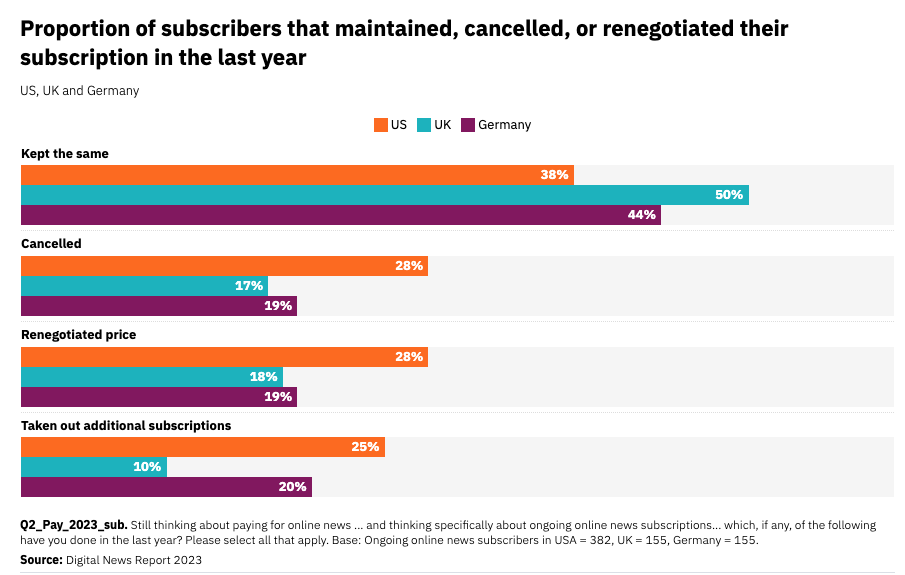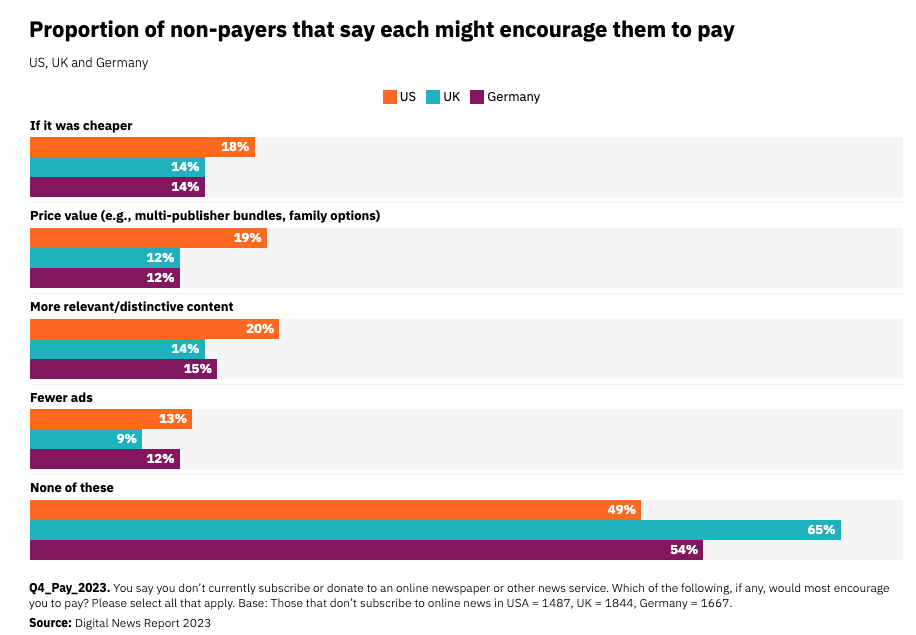
The cost-of-living crisis is causing people to cancel their news subscriptions, according to new research by the Reuters Institute for the Study of Journalism (RISJ).
The new paper builds on the findings of the Digital News Report 2023 that - particularly in the UK - people's willingness and ability to pay for online news has hit a plateau.
Across the 20 markets, 17 per cent of news audiences pay for online news. That figure has not changed since 2021 after the 'coronabump' effect on subscriptions, but it does represent a seven percentage point increase in a decade.
The UK sits at the joint bottom of the pack with Japan, with nine per cent of audiences paying for online news.
Half of the UK survey respondents maintained news subscriptions in the last year. But nearly one in six cancelled (17 per cent) or negotiated prices (18 per cent), notably because of the squeeze on household budgets.
The abundance of free content is still seen as a core reason why Britons are resistant to pay. Those who do pay, tend to pay for a single news subscription. There are some clear winners, including The Times and The Sunday Times, the Financial Times and the Guardian.
However, many lapsed subscribers reported sharp increases to full subscriptions post-trial period as a core turn-off. The Times and The Sunday Times and the Financial Times offer limited-time £1 a month deals, rolling into £26 and £55 a month subscriptions.

For comparison, entertainment subscription services, like Netflix (£16), Spotify (£11) and Disney+ (£8) offer considerably cheaper premium plans in the UK.
The report says: "Consumers have become increasingly conditioned to expect special offers. These introductory prices are highly effective at attracting users in the first place, but often hard to wean consumers off when the renewal comes around."

So what will help subscriptions return to growth?
In countries where there is significant resistant to pay, it might just be a bridge too far for some. In the UK, two thirds (65 per cent) of people not currently paying for the news say nothing could persuade them to pay.
The remaining third can be won over by better value for money, more relevant products and/or a smoother user experience.

Price appears to be a deciding factor. Non-paying Britons could be tempted by more affordable packages, shareability with family or friends and bundling products into the subscription. People want to feel like they can get full value from a news subscription.
News organisations are trying to introduce digital products that cater to older users, like print newspaper replicas. Others are offering cheaper subscriptions that cater for specific interests or levels of consumption.
Free daily newsletter
If you like our news and feature articles, you can sign up to receive our free daily (Mon-Fri) email newsletter (mobile friendly).
Related articles
- 15 free sources of data on the media industry
- Bloomberg Media and Puck's subscription strategy: 'wake up the sleepers and prioritise the keepers'
- Journalism trends and predictions for 2024, with Nic Newman
- Most news leaders think generative AI benefits newsrooms, RISJ finds
- Standing out in a crowded market: what makes a top news podcast?









